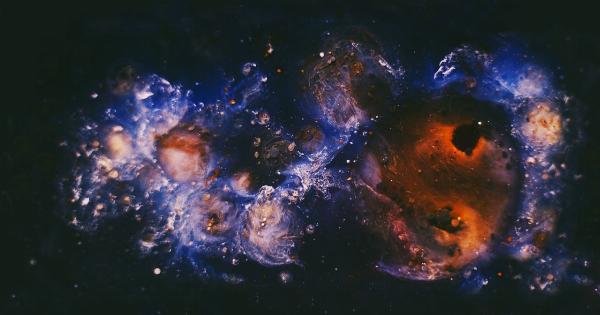Migraines are severe headaches that can be debilitating and affect daily functioning. They are usually accompanied by other symptoms such as nausea, vomiting, and sensitivity to light and sound.
Migraines can last for a few hours to several days, causing significant distress to individuals who suffer from them. While there are various treatment options available to manage migraine symptoms, light therapy has shown promise in reducing the intensity and duration of migraines.
Understanding Migraines
Migraines are neurological conditions characterized by recurrent headaches that are often one-sided and pulsating in nature.
The exact cause of migraines is not fully understood, but it is believed to involve a combination of genetic and environmental factors. Migraines are thought to result from abnormal brain activity that affects blood vessels, neurotransmitters, and chemicals in the brain.
The Role of Light in Migraine Triggers
Light sensitivity, also known as photophobia, is a common symptom experienced by individuals with migraines. Many migraine sufferers find that exposure to bright or flickering lights can trigger or worsen their symptoms.
This sensitivity to light can be attributed to the way the brain processes visual information during a migraine attack.
How Light Therapy Works for Migraines
Light therapy, also known as phototherapy, involves the controlled exposure to specific wavelengths of light to achieve therapeutic benefits.
In the context of migraines, light therapy aims to modulate the brain’s response to light and reduce the severity of migraine symptoms.
1. Narrowband Blue Light Therapy
Narrowband blue light therapy has shown promise in the management of migraines. This form of light therapy involves exposure to a specific wavelength of blue light, typically between 460 to 490 nanometers.
Blue light is known to affect melatonin levels, a hormone involved in regulating the sleep-wake cycle and associated with migraines. By targeting the specific range of blue light, narrowband blue light therapy can help regulate melatonin levels and reduce the frequency and severity of migraines.
2. Green Light Therapy
Green light therapy is another emerging therapy for migraine management. Green light has been found to have a calming effect on the brain and may help alleviate migraine symptoms.
It works by stimulating certain pathways in the brain that are responsible for modulating pain perception and reducing hyperexcitability. Green light therapy is non-invasive and can be easily administered using specialized light devices or goggles.
3. Amber Light Therapy
Amber light therapy involves exposure to a specific wavelength of amber-colored light, which is known to have a calming effect on the brain.
This therapy aims to minimize the activation of pain pathways in the brain and reduce the severity of migraine attacks. Amber light therapy can be used as a complementary approach alongside other migraine treatments to provide relief and improve the overall management of migraine symptoms.
4. Daylight and Natural Light Exposure
Exposure to natural daylight has also been shown to have therapeutic effects on migraines.
Spending time outdoors, especially in the morning or evening when the natural light is softer, can help regulate circadian rhythms and improve sleep patterns, which may contribute to migraine prevention. Additionally, daylight exposure can help reduce stress levels and improve overall well-being, which are factors known to influence the frequency and intensity of migraines.
5. Timing and Duration of Light Therapy
The timing and duration of light therapy sessions are crucial for optimizing its effectiveness in managing migraines. Light therapy should ideally be administered during the early stages of a migraine attack or as soon as symptoms arise.
The duration of each session can vary depending on the specific therapy being used but is typically in the range of 15 to 60 minutes.
6. Safety Considerations
While light therapy is generally considered safe, it is important to use caution and consult with a healthcare professional before initiating any new treatment.
Some individuals may be more sensitive to light and may experience discomfort or exacerbation of symptoms with light therapy. It is essential to follow manufacturer guidelines and ensure appropriate eye protection, especially for therapies involving bright or intense light sources.
7. Combining Light Therapy with Other Migraine Treatments
Light therapy can be used as an adjunctive therapy alongside other migraine treatments to enhance symptom management.
Many individuals find that combining light therapy with medication, lifestyle modifications, and other non-pharmacological interventions provides better overall relief from migraines. It is important to work closely with a healthcare professional to develop a comprehensive treatment plan tailored to individual needs and preferences.
8. Future Directions and Research
The field of light therapy for migraines is still evolving, with ongoing research aimed at further understanding its mechanisms and optimizing treatment protocols.
Many studies have shown promising results, but additional large-scale clinical trials are needed to establish the long-term efficacy and safety of different light modalities for migraine management. With advances in technology, more portable and affordable light therapy devices may become available, expanding access to this non-invasive treatment option.
9. Incorporating Light Therapy into Daily Routine
To maximize the benefits of light therapy, it can be helpful to incorporate it into daily routines. This can be done by using specialized light devices or lamps designed for light therapy.
These devices can be used in the morning to mimic the natural rise of the sun and help regulate circadian rhythms. Additionally, individuals can make a conscious effort to spend time outdoors during daylight hours to benefit from natural light exposure.
10. Conclusion
Light therapy offers a promising non-pharmacological approach to reduce the symptoms associated with migraines.
Whether it is narrowband blue light, green light, amber light, or exposure to natural daylight, different light therapies have shown potential in regulating brain activity, reducing hyperexcitability, and modulating pain pathways. As with any treatment, it is important to consult with a healthcare professional before starting light therapy and to personalize the treatment plan based on individual needs and preferences.





























